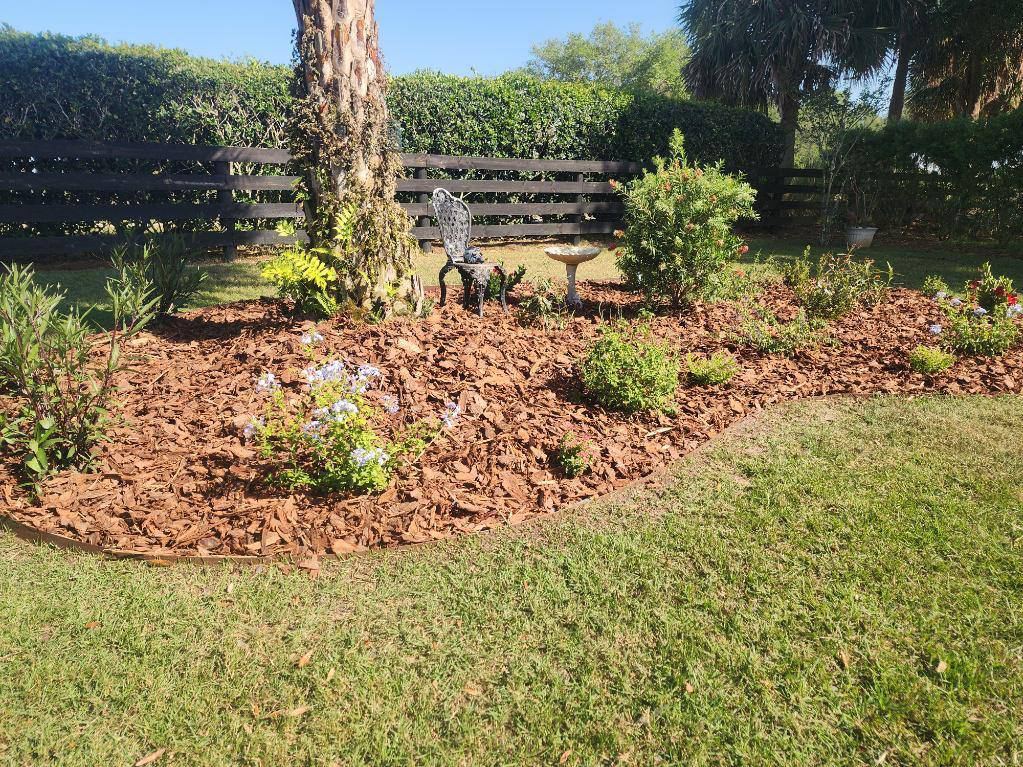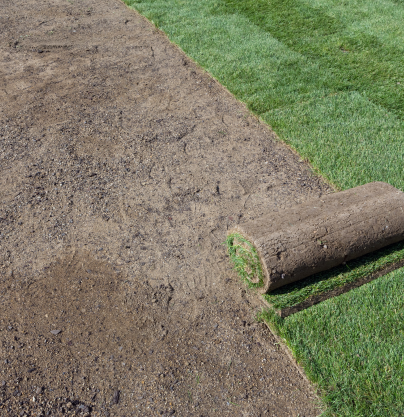Tired of watering your lawn and garden only to see it dry up in the sun? Consider xeriscaping! This environmentally-friendly and cost-effective landscaping technique can save thousands of gallons of water each year. In this blog post, we’ll cover everything you need to know about xeriscaping, from choosing the right mulch to creating low-maintenance rock gardens and rain gardens. Let’s dive into the world of xeriscaping and create a beautiful, sustainable landscape that will thrive for years to come.
The Necessity of Drought-Resistant Landscaping
With water scarcity becoming a concern, drought-resistant landscaping is essential. It conserves water and promotes a water-wise yard, making it ideal for regions like California. By using drought-tolerant plants and incorporating hedges and boulders, you can reduce the need for excessive watering while adding visual appeal. This type of landscaping also curbs erosion, minimizes runoff, and creates a sustainable outdoor space.
Key Components of Xeriscaping
Incorporating drought-tolerant plants and native species is crucial for xeriscaping. By choosing plants adapted to the local environment, you can create a beautiful and resilient landscape that requires minimal water. Efficient irrigation systems like drip irrigation conserve water by delivering it directly to plant roots, reducing evaporation.
Xeriscape design principles focus on maximizing natural resources while minimizing water waste. Mulch retains moisture, suppresses weeds, and reduces evaporation. Lastly, low-maintenance and drought-resistant plants ensure a vibrant landscape with minimal watering.

Choosing the Right Mulch
When it comes to xeriscaping, selecting the appropriate mulch is a crucial step towards success. The right mulch not only helps to retain moisture in the soil but also suppresses weed growth and improves soil quality. There are two main types of mulch to choose from:
- Organic mulch: This type of mulch is made from natural materials such as bark or wood chips. In addition to its functional benefits, organic mulch adds a natural aesthetic to your xeriscape design.
- Inorganic mulch: Gravel is an example of inorganic mulch that reduces water evaporation and offers a contemporary look to your xeriscape. It also helps to insulate plant roots from temperature changes.
When choosing the perfect mulch for your drought-tolerant landscape, consider the color of the mulch as well. The right mulch color can enhance the overall design of your xeriscape. With the appropriate mulching material, you can create a resilient and visually appealing xeriscape that requires minimal water.
Incorporating Ornamental Grasses and Groundcovers
Incorporating ornamental grasses and groundcovers into your xeriscape design can bring vibrancy and dynamism to your landscape. These plants add texture and movement, require minimal water and maintenance, and attract pollinators like hummingbirds. Ornamental grasses like California fescue or blue oat grass thrive in full sun and provide year-round interest with evergreen foliage. Groundcovers like creeping thyme prevent weed growth, erosion, offer natural insulation, and help conserve moisture. These drought-tolerant plants are essential for any xeriscape design.
Paver Walkways in Xeriscaping
Paver walkways in xeriscaping add functionality and visual appeal to your landscape. They create defined pathways, enhance accessibility, and reduce the need for excessive watering. These durable walkways withstand harsh weather conditions and can be customized to complement any xeriscaping style. Add an inviting touch to your landscape while conserving water with paver walkways.
Establishing Low-Maintenance Rock Gardens
Rock gardens are a low-maintenance and drought-tolerant landscaping solution. They require minimal upkeep and watering, making them ideal for busy homeowners and water conservation. The rocks retain heat, creating a beneficial microclimate for plants, especially in colder climates.
Rock gardens also enhance the landscape’s natural beauty and work well in areas with poor soil quality. By using drought-tolerant plants, you can create a visually stunning rock garden that complements the environment.
Enjoying Mediterranean Fragrances in Your Xeriscape
Enhance your xeriscape with Mediterranean fragrances. These plants are drought-tolerant and water-wise, making them a perfect choice for your landscape. They require less water and attract pollinators like bees and butterflies. Walking through your garden will be a sensory delight with the relaxing scents of lavender and other fragrant plants.
Not only will this create an inviting atmosphere, but studies show that the scent of Mediterranean plants can improve well-being. Indulge in their captivating fragrances and transform your xeriscape into a sensory oasis.
The Role of Succulents in Drought-Resistant Landscaping
Succulents are essential for drought-resistant landscaping. These plants store water in their leaves, reducing their water needs and making them perfect for xeriscaping. In addition to conserving water, succulents bring visual interest with their variety of shapes, colors, and sizes.

They are low-maintenance and hardy, making them great for beginners and busy homeowners. Use succulents in your xeriscaping to create a vibrant and sustainable garden that thrives in arid conditions.
Exploring Xeriscaping with Annuals
Looking to add some color and variety to your xeriscaped landscape? Consider incorporating annuals into your design! These drought-resistant plants not only offer a stunning array of hues, but also help minimize water usage. Here are some reasons why annuals are a great addition to any xeriscaping project:
- Change up your landscape design each year with annuals, filling gaps between perennial plantings for a lush look.
- Incorporating native annuals supports local ecosystems and pollinators, while also adding biodiversity to your garden.
- Annuals are versatile and can be used in a variety of ways, such as in container gardens, hanging baskets, or as borders.
- Many annuals bloom throughout the growing season, providing color and interest all summer long.
With so many different varieties and colors to choose from, annuals offer endless possibilities for creating a unique and vibrant xeriscaped landscape.
Time-Saving Perennials in Xeriscaping
When it comes to xeriscaping, incorporating time-saving perennials is a smart choice. These long-lasting plants are known for their ability to return year after year, requiring less maintenance and water compared to annuals. With a wide selection of drought-tolerant perennials available, you can enjoy continuous blooms and vibrant colors in your landscape.
Not only do perennials add beauty to your garden, but they also save you time and effort in the long run. By establishing a perennial garden, you can create a low-maintenance, drought-resistant landscape that thrives with little water.
Adding Color with Pollinator Gardens
Create a vibrant pollinator garden by enhancing your xeriscape. Plant drought-tolerant flowers to attract bees, butterflies, and other pollinators while conserving water. Increase biodiversity with native plants that support pollinator populations. Imagine colorful flowers and buzzing pollinators in your garden, bringing life to your outdoor space. Choose xeric plants like California cacti and evergreen shrubs for a stunning landscape that requires minimal water but offers a burst of color. Consult a professional landscaper for flower bed design and visual appeal.
The Shift Towards Rain Gardens in Xeriscaping
Incorporating rain gardens into your xeriscape is a smart move for several reasons. Here are some benefits to consider:
- Efficiently captures and utilizes rainwater, reducing water runoff and erosion in the process
- Creates a visually appealing feature while conserving water and improving water quality
- Home to a variety of plants that thrive in moist conditions, adding color and vibrancy to your xeriscape
- Native plants in your rain garden act as natural filters, enhancing the overall sustainability of your landscape design
Rainwater Recycling Systems for Xeriscapes
Implementing rainwater harvesting systems is a wise choice for xeriscapes. By collecting and storing rainwater, you can supplement watering needs while reducing reliance on municipal water sources. This saves money on water bills and promotes water conservation, crucial for drought-resistant landscaping. Rainwater recycling systems help your xeriscape thrive during drought conditions, ensuring a vibrant and beautiful garden. Incorporating such irrigation systems sustains xeric plants and achieves a low-water, sustainable landscape design.
The Importance of Drip Irrigation in Xeriscaping
Drip irrigation systems are essential for maximizing xeriscape efficiency. They deliver water directly to plant roots, minimizing waste and evaporation. Precise irrigation targets low spots, ensuring each plant receives the right amount of moisture. This optimizes water usage, reduces weed growth, and prevents water runoff. Invest in drip irrigation to enhance your drought-tolerant landscaping’s efficiency and sustainability while conserving water resources.
How to Make Your Backyard Xeriscape Comfortable?
Xeriscaping is a great way to create a beautiful and sustainable outdoor oasis, even in areas with limited water resources. Here are some ideas to make your xeriscape a comfortable retreat for family and friends:
- Incorporate comfortable seating areas and shade structures, such as pergolas or umbrellas, to provide relief from the sun and heat.
- Design pathways and walkways that lead to relaxation spots amidst lush greenery, such as a hammock or a cozy nook with outdoor pillows and throws.
- Blend practicality and aesthetics by choosing drought-resistant plants and hardscaping materials that complement your home’s architecture and color scheme.
- Consider adding a water feature, such as a small fountain or a reflecting pool, to create a soothing ambiance and attract wildlife to your garden.
- Don’t forget to add lighting to your xeriscape, such as solar-powered lanterns or string lights, to extend the use of your outdoor space into the evening.
With these tips, you can transform your backyard into a beautiful and functional xeriscape that will provide enjoyment for years to come.
Xeriscaping for Pet Owners: A Guide
When designing your xeriscape as a pet owner, it’s important to prioritize the safety and well-being of your furry friends. Choose pet-friendly plants that won’t harm them if ingested, avoiding any toxic varieties. Additionally, consider creating designated play areas within your xeriscape design, ensuring that your pets have space to exercise and enjoy.
By incorporating low-maintenance and drought-resistant plants into your landscaping, you can create a natural and beautiful environment that both you and your pets will love. Take their needs into account, making sure your xeriscape is not only visually appealing but also functional for your four-legged companions.
How Can Xeriscaping Save You Money?
Save money with xeriscaping by reducing water bills through efficient irrigation methods and minimizing water usage. Additionally, low-maintenance plants and landscaping techniques help reduce maintenance costs. A well-designed xeriscape also decreases the need for fertilizers and pesticides, resulting in long-term savings while creating an environmentally friendly landscape.
Conclusion
Xeriscaping is a practical and beautiful landscaping option that combats drought conditions. Incorporate mulch, grasses, walkways, rock gardens, succulents, and perennials for a vibrant and low-maintenance xeriscape. Rain gardens, recycling systems, and drip irrigation conserve water. Xeriscaping offers benefits like pet-friendliness and water bill savings. Embrace the movement and transform your outdoor space into a sustainable oasis.